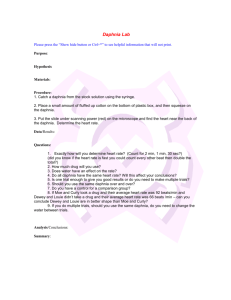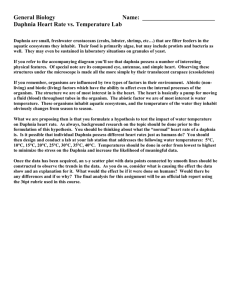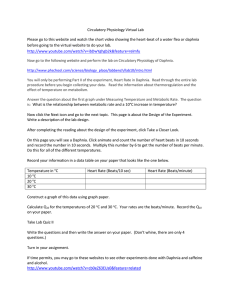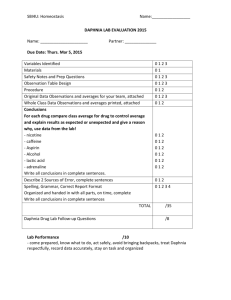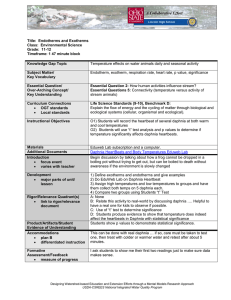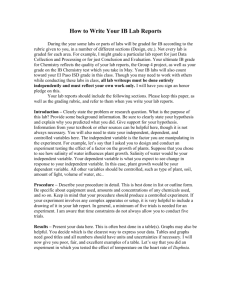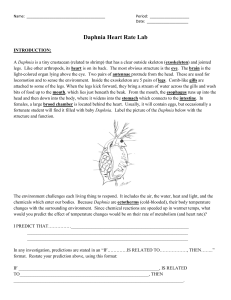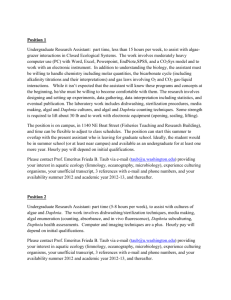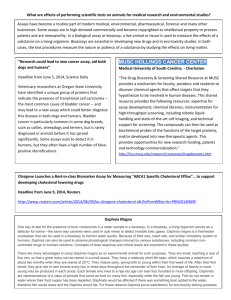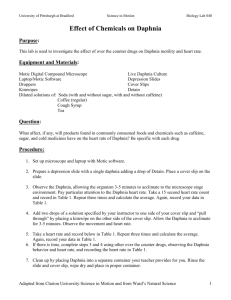Lab: Daphnia (water flea)
advertisement
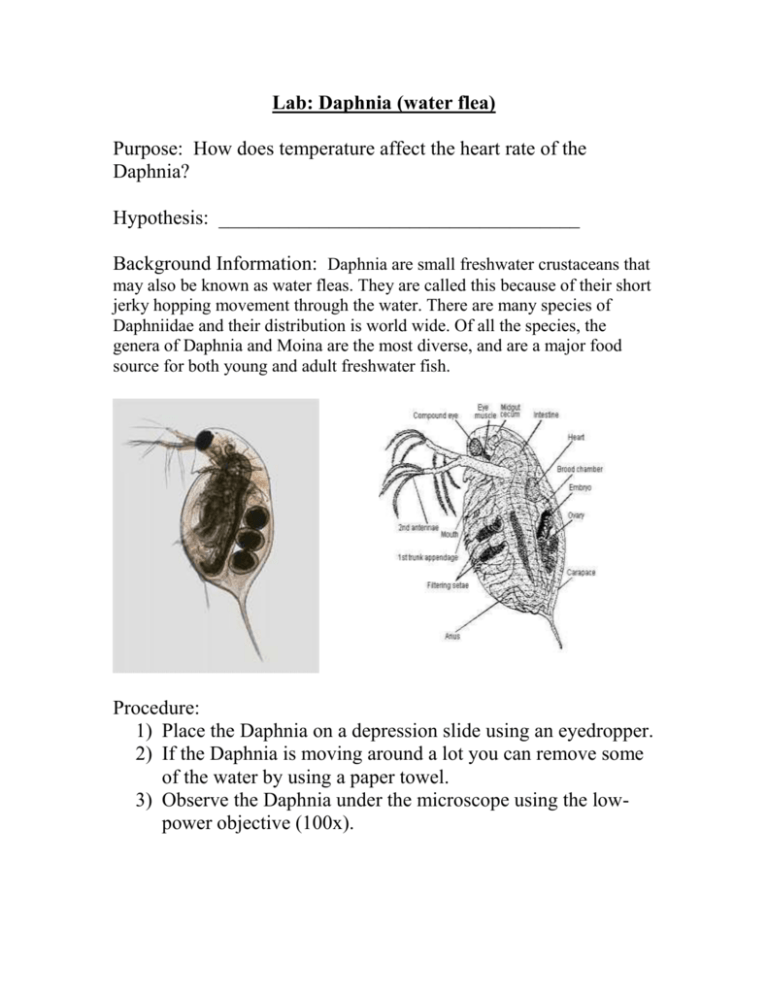
Lab: Daphnia (water flea) Purpose: How does temperature affect the heart rate of the Daphnia? Hypothesis: ____________________________________ Background Information: Daphnia are small freshwater crustaceans that may also be known as water fleas. They are called this because of their short jerky hopping movement through the water. There are many species of Daphniidae and their distribution is world wide. Of all the species, the genera of Daphnia and Moina are the most diverse, and are a major food source for both young and adult freshwater fish. Procedure: 1) Place the Daphnia on a depression slide using an eyedropper. 2) If the Daphnia is moving around a lot you can remove some of the water by using a paper towel. 3) Observe the Daphnia under the microscope using the lowpower objective (100x). 4) While observing the Daphnia under lower-power, count the number of heartbeats in 15 seconds. Record that number in the data table. 5) Remove as much water as possible using a paper towel. 6) Using an eyedropper, add about 3 drops of 40 ٥ F water (COLD). 7) Count the number of heartbeats in 15 seconds and record that number in the data table. 8) Remove as much water as possible using a paper towel. 9) Using an eyedropper, add about 3 drops of 90 ٥ F water (WARM). 10) Count the number of heartbeats in 15 seconds and record that number in the data table. Data Table: Water temperature 75 ٥F 40 ٥F 100 ٥F Graph: Heartbeats/15 seconds Daphnia heartbeats per 15 seconds 40 35 30 25 Heartbeats 20 15 10 5 0 40 F 75 F 90 F Conclusion: _______________________________________

